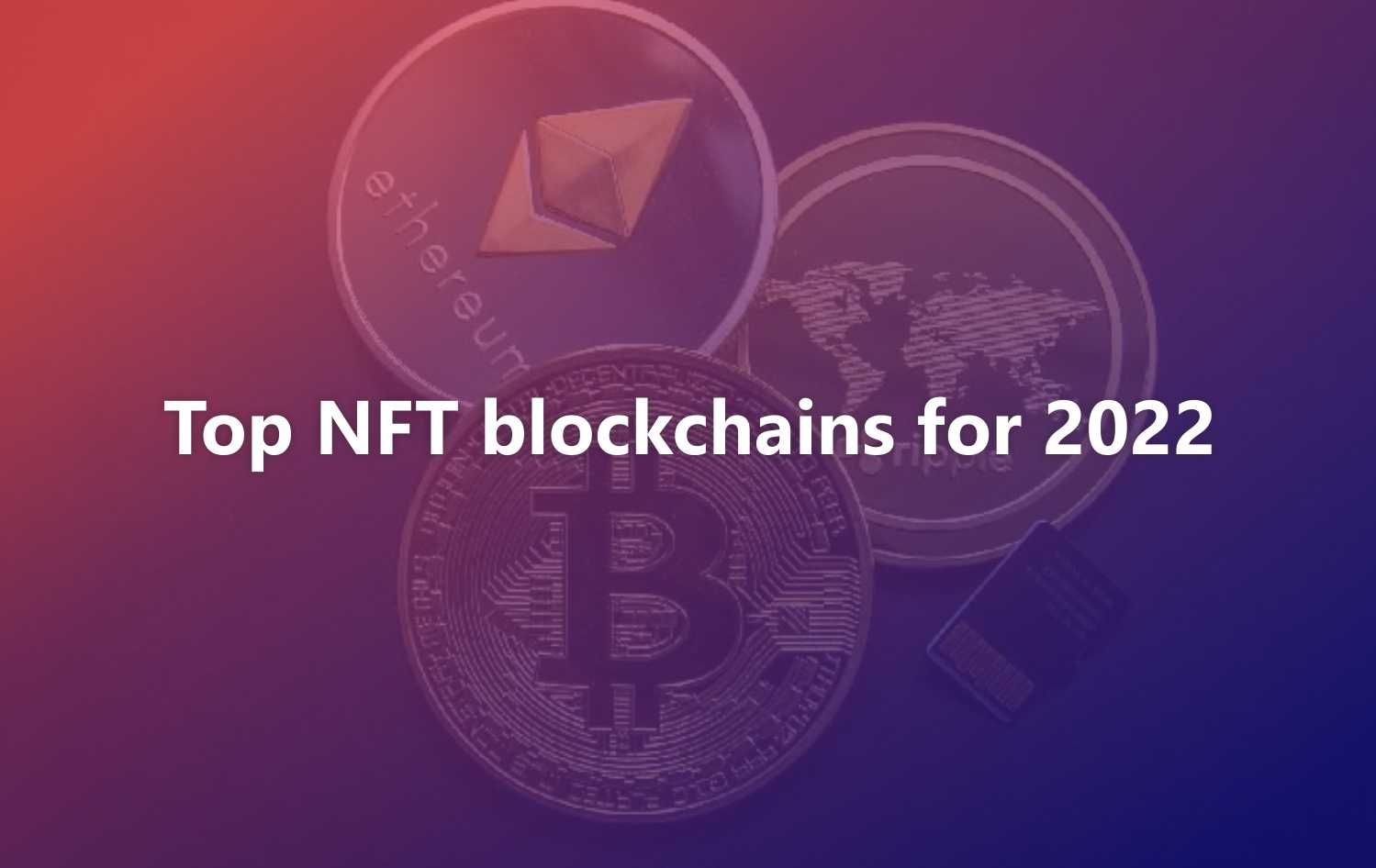Cryptocurrencies are the most widespread use case of blockchain technology and present incredible investing opportunities to individuals around the globe. Their profit-making capabilities have drawn in millions of retail and institutional investors.
People can trade cryptos on an exchange or use advanced financial instruments such as crypto opinions trading like the ones found on Bitlevex. However, there’s another type of digital asset that has seen incredible growth in 2021. We are of course talking about non-fungible tokens, or NFTs.
In this article, we provide a comprehensive list of the best NFT-focused blockchains on the market. This should give you a good idea of which blockchains could see increased usage, following the expected growth of the NFT market in the next year.
Top NFT blockchains for 2022
Ethereum
Ethereum is undeniably the king of NFTs as we are writing these lines. More than 90% of all digital assets have been created as ERC-721 tokens on the Ethereum network, including some of the most popular ones like Axie Infinity and CryptoPunks.
However, this popularity has come with its set of drawbacks. The network has been saturated and transaction fees have gone through the roof lately. That said, there’s light at the end of the tunnel.
Ethereum is set to switch to a proof-of-stake consensus model in 2022. This should allow for better scaling of the network, which will increase the speed of transactions while simultaneously reducing their cost.
Solana
Solana is a rising star in the crypto ecosystem and is considered to be one of the fastest blockchains available. With more than 1000 transactions per second, it provides a robust infrastructure for minting and storing NFTs in an eco-friendly and cost-efficient way.
Similar to Ethereum, Solana has been built as a Layer 1 solution, trying to provide an interoperable ecosystem for all projects deployed on its network.
Polygon
Polygon (previously Matic network) is a Layer 2 solution for Ethereum, that allows building faster and scalable solutions using autonomous smart contracts. The main advantage of this blockchain is its compatibility with the Ethereum virtual machine as well as very low gas fees.
Polygon is already been used for the creation of various NFTs, which can be accessed on the OpenSea marketplace by selecting the appropriate blockchain. Some future prospects of Polygon include the addition of other base chains in addition to Ethereum. This should allow interoperability between multiple Layer 1 solutions using the fast and scalable solutions of Polygon’s smart contracts.
Cardano
Cardano is another Layer 1 solution that has slowly crept up in the top 5 cryptocurrencies on the market since its 2017 release. Unlike other blockchains on our list, Cardano doesn’t have a whitepaper. Instead, it was peer-reviewed by some of the best experts in the blockchain industry.
Over the years, the blockchain has seen multiple upgrades, with the most recent one being the implementation of smart contract capability. This update has enabled the creation of NFTs. Considering the size of the Cardano community, this trend is bound to grow in the following years.
Tezos
Tezos is one of the first functional smart contract proof-of-stake blockchains, providing a stable and scalable network since early 2018. Thanks to the low transaction fees and high speeds it provides, Tezos is gaining traction in the NFT ecosystem.
Mining an NFT on Tezos costs only a fraction of an XTZ token, which can be considered negligible compared to the hundreds of dollars needed to mint on Ethereum. Just recently, the highly influential Art Basel Miami Beach Show announced that it would be making a showcase of NFT digital art on the Tezos blockchain.
Binance Smart Chain
The Binance Smart Chain (BSC) is not to be confused with the Binance Chain which is used for the Binance decentralized exchange. Released in September 2020, the BSC provides a smart contract capable platform that runs with the help of the BNB token, an established cryptocurrency in the crypto markets.
Because of its compatibility with the Ethereum virtual machine, the BSC has seen considerable success because of the low fees and fast transactions it provides. It’s worth noting that the BCS has had some youth-related issues such as weak smart contract security. This has been the cause of multiple hacks on the platform which might have made some investors wary of using the chain’s services for their NFT projects.
That said, these issues have been polished out by the active development team and it seems that the BSC has a bright future ahead of it in the NFT market.
Wrapping up
NFTs are an important niche in the cryptocurrency market. They provide extra exposure to cryptocurrencies for users that might have never been in contact with these assets otherwise. Because they are so closely linked to digital art and gaming, they contribute actively towards the mass adoption of blockchain technology.
Consequently, blockchains that are capable of nesting NFTs are bound to see exponential growth as the market share of these digital assets increases over the years.

